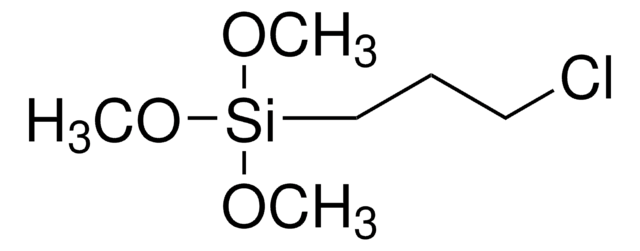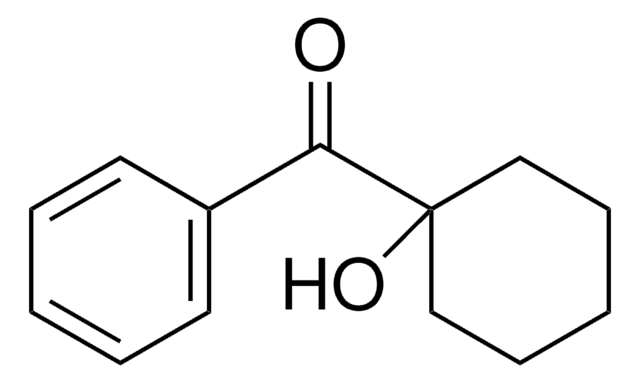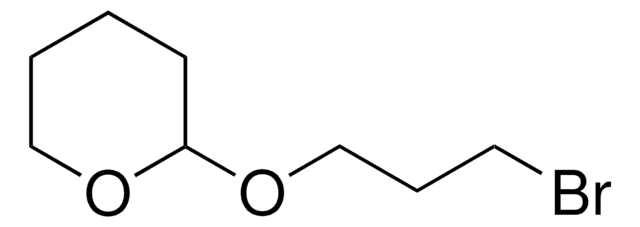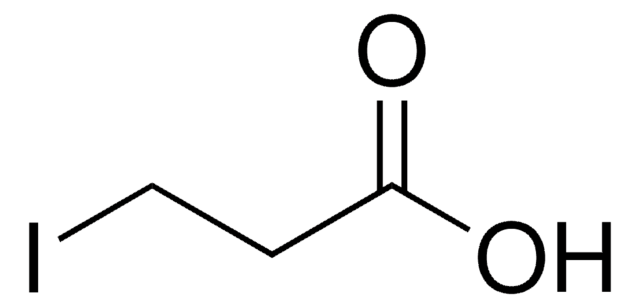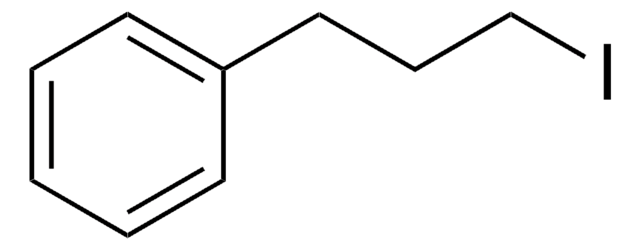All Photos(1)
About This Item
Linear Formula:
I(CH2)3OH
CAS Number:
Molecular Weight:
185.99
EC Number:
MDL number:
UNSPSC Code:
12352100
PubChem Substance ID:
Recommended Products
Assay
97%
refractive index
n20/D 1.556 (lit.)
bp
115 °C/38 mmHg (lit.)
density
1.942 g/mL at 25 °C (lit.)
functional group
hydroxyl
iodo
storage temp.
2-8°C
SMILES string
OCCCI
InChI
1S/C3H7IO/c4-2-1-3-5/h5H,1-3H2
InChI key
CQVWOJSAGPFDQL-UHFFFAOYSA-N
Signal Word
Warning
Hazard Statements
Precautionary Statements
Hazard Classifications
Acute Tox. 4 Dermal - Acute Tox. 4 Inhalation - Acute Tox. 4 Oral - Eye Irrit. 2 - Skin Irrit. 2 - STOT SE 3
Target Organs
Respiratory system
Storage Class Code
10 - Combustible liquids
WGK
WGK 3
Flash Point(F)
235.4 °F - closed cup
Flash Point(C)
113 °C - closed cup
Personal Protective Equipment
dust mask type N95 (US), Eyeshields, Gloves
Choose from one of the most recent versions:
Already Own This Product?
Find documentation for the products that you have recently purchased in the Document Library.
Customers Also Viewed
Notes-Reaction of Cyclic Sulfites of 1, 3-Glycols with Sodium Iodide.
Wawzonek S and Loft J.
The Journal of Organic Chemistry, 25(11), 2068-2069 (1960)
Nawon Jeon et al.
Journal of nanoscience and nanotechnology, 13(12), 7955-7958 (2013-11-26)
Polymeric ionic liquid, poly(1-methyl 3-(2-acryloyloxy propyl) imidazolium iodide) (PMAPII) containing iodide ions is synthesized and used as a matrix polymer for preparing the composite polymer electrolytes. The composite gel polymer electrolytes are prepared by utilizing PMAPII, organic solvent containing redox
I Kaldor et al.
The Journal of organic chemistry, 66(10), 3495-3501 (2001-05-12)
The quaternizations of dibenzoquinolizines 9 and 14 with 3-halo-1-propanols are highly cis-selective (94-100% cis), results consistent with the N-methylation of O-methylcapaurine (7b), but in contrast to the proposed trans-stereochemistry of dibenzo[a,h]quinolizine methiodide 10 and the analogous quaternizations of 1-benzyl- and
Ibrahim Yildiz et al.
Proceedings of the National Academy of Sciences of the United States of America, 103(31), 11457-11460 (2006-07-25)
Semiconductor quantum dots are becoming valuable analytical tools for biomedical applications. Indeed, their unique photophysical properties offer the opportunity to design luminescent probes for imaging and sensing with unprecedented performance. In this context, we have identified operating principles to transduce
D'hooghe M and De Kimpe N.
Tetrahedron, 64(15), 3275-3285 (2008)
Our team of scientists has experience in all areas of research including Life Science, Material Science, Chemical Synthesis, Chromatography, Analytical and many others.
Contact Technical Service




